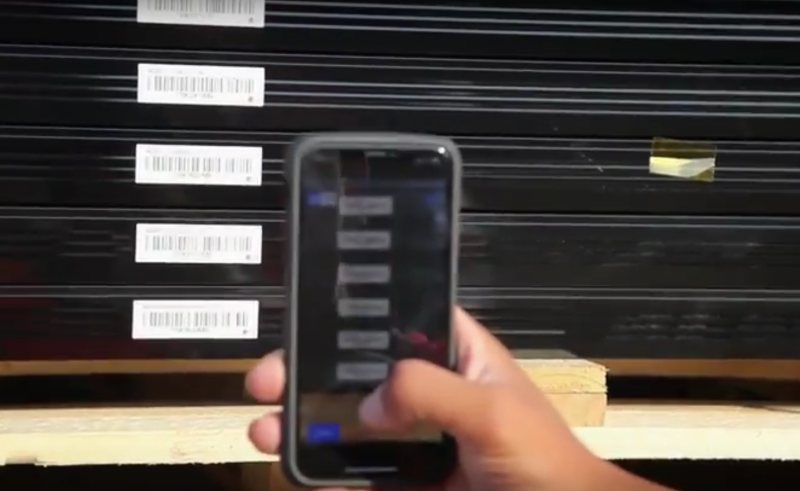
After a successful pilot program, Australia’s Clean Energy Regulator has extended the Solar Panel Validation Initiative across the industry.
As part of its crackdown on the installation of unapproved solar panels under Australia’s Small-scale Renewable Energy Scheme (SRES), the Clean Energy Regulator announced in July last year it had partnered with the solar industry and peak bodies including the REC Agents Association, Clean Energy Council and Smart Energy Council on a program to make verifying panels a quick and easy task.
The initiative consists of a smartphone application and a database of verified information for solar panels. The installer or retailer scans the bar codes on the panels when on-site prior to installation, and a request for validation is sent to the database. A message is then relayed back to the installer/retailer confirming that the panels are genuine and approved, or flagging that there’s an issue.
Participating solar panel manufacturers at this point in time are:
The Regulator is encouraging all manufacturers and installers to get on board with the validation program. Participation in the initiative could eventually become another point of difference when choosing a solar installer.
“This joint initiative is aimed at strengthening the integrity of industry and the scheme, and protecting consumers by making the identification of unapproved panels easier,” states the Regulator.
In order for a solar power system to be eligible for Australia’s “solar rebate“, panels must be listed on the Clean Energy Council’s Approved Products List. Aside from the issue of subsidy eligibility, nobody likes paying for one thing and receiving another.
An example of this happening was a few years ago when the Clean Energy Regulator determined a former retailer had installed non-genuine Canadian Solar branded panels in New South Wales and Queensland.
As well as protecting consumers, solar panel validation will help protect retailers from financial penalty and reputational damage, and agents from fraud through improperly created Small-scale Technology Certificates (STCs).
The Regulator states that applications to create small-scale technology certificates (STC) submitted with validated solar panels are likely to be processed more quickly than those without, which may be subject to a more detailed assessment.
Further information on the Solar Panel Validation Initiative for consumers, installers, retailers and manufacturers can be viewed here.

 RSS - Posts
RSS - Posts



I think that, whilst this initiative is good, the way that the CER operates, needs to be reviewd, as I think that the CER is recklessly endangering us.
A reason is thus.
We have, upon our roof, two domestic rooftop photovoltaic systems.
When they were installed, all of the components were approved by the CER. It was all approved by the authorities.
One system (installed 2014-02-04) stopped generating electricity, after about three and a half years. The installation company went broke and disappeared, and the solar panels manufacturer (Linuo) appears to not have a suable presence in Australia, and, similarly, with the inverter manufacturer (ReWatt).
From advice that I have been given, the system is not allowed to be repaired.
Because neither the Linuo panels, nor the ReWatt inverter, are currently approved, the system is not allowed to be got working safely again – the only work allowed to be done on it, is removal and/or replacement (with currently approved components).
From what I understand, one of the bodgy quotes that was given to me, for replacing both systems (the only quotes that were provided to me, wrere bodgy quotes, including from CEC approved retailers), involved a quote component of $800 for removing the two systems. As that was relating to, and, in addition to, a quote for replacing the two systems, I assume that it would cost about that much, to remove the unserviceable system, in the absence of replacing both systems; as a standalone job.
So, it costs too much to remove it.
Something still happens with that system – the display flashes at dawn and dusk, an the LCD display still works.
But, with it having to stay installed, without being allowed to be made safely operational again, the question arises, as to whether we are going to suffer the house burning down, because the CER prohibits us from having a faulty electrical system repaired.
It is a bit like having wiring in the ceiling of a house, shorting, and, being prohibited, by the authorities, from having it repaired, because it is more fun for them, to watch houses burn down.
It is great to see Solar going so well, however, people putting in solar hot water systems, 4 or 5-star rating white goods and LED lights also make a difference. I also turn off power at the switch to TV’s and microwave when not on use. My average usage is around 3 cents an hour from my monitor. I have a 3kw system. I would like to see households get awards from the energy retailers on power usage.
This initiative also helps in ensuring that the consumer gets legitimate products from manufacturers